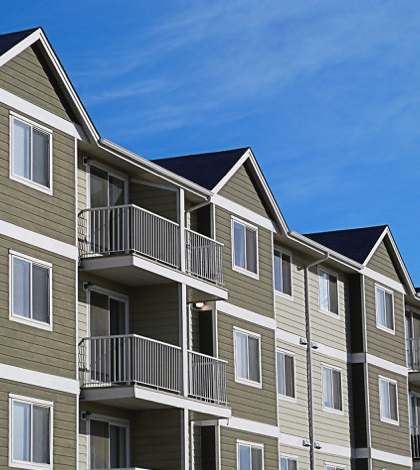Ben Benoit recently took over as vice president of public affairs for the California Apartment Association’s Inland Empire chapter. With housing prices up this should be a a good time for apartment builders, but Benoit says the industry faces challenges.
When the Greater Inland Empire chapter of the California Apartment Association approached Ben Benoit last year about becoming its vice president of public affairs, he knew almost immediately it would be good fit.
“It was attractive because I’ve been on the Wildomar City Council for six years, I’ve worked on a lot of the housing issues the association deals with,” Benoit said. “I was very familiar with what they do and the problems they’re trying to solve.”
So Benoit decided to give up his computer business, which he’s in the process of selling, and accept the position. He began work earlier this month on behalf of the chapter, which represents all of Riverside and San Bernardino counties and part of eastern Los Angeles County.
Based in Sacramento, the non-profit association is the largest apartment trade group in the United States. It represents owners, investors, developers, managers and suppliers in the apartment industry, while advocating on behalf of the rental housing industry.
The association has approximately 13,000 members. It advises about 50,000 apartment builders and owners on new regulations as well as any apartment-related legislation – local, state or federal – in the pipeline.
A combination of high housing prices and a slow recovery from the recession has led to a demand for more apartment space during the last five years, a demand that isn’t likely to slow down soon, especially in Southern California.
Last April, the USC Lusk Center for Real Estate predicted that multifamily housing in Southern will experience another two years of growth.
Los Angeles, Orange County, San Diego County and the Inland Empire will experience “significant rent increases” as well as drops in vacancy rates as apartment supply decreases, according to the Lusk Center.
In the Inland Empire, the average monthly rent last year was $1,155 per month and vacancy rates were 7.5 percent, the highest in Southern California. Inland Empire rents will go up an average $84 per month through 2018, the Lusk Center predicted.
Even though construction permits for apartment projects in Southern California are back to where they were before the recession, affordable apartment space is still hard to find for a lot of people.
Securing housing that people can afford to buy is maybe government’s most important job, especially on the local level, Benoit said.
“I worry about affordable housing, and when I say affordable housing I don’t mean housing that is subsidized by the government,” Benoit said. “I mean housing that people can afford to buy. What’s more important than having a decent place to live?”
Meanwhile, the price of a single-family home is going up. In November, the most recent numbers available, the median price of a home in Riverside County was $340,000, up 1.5 percent compared with November 2015.
In San Bernardino County, the median home price was $295,000, a year-over-year increase of 3.5 percent.
The rise in home prices – a trend that has been going on nationwide for several years – would at first appear to be a good thing for the apartment association. If people can’t afford to buy a house, or they choose not to buy one, renting an apartment would seem to be a logical alternative.
But it’s not that simple, according to Benoit.
“Some cities have a bias against apartments,” Benoit said. “For whatever reason they don’t want to build them. Some of it is NIMBYism, some of it is they associate apartments with they were designed in the 1960s and ‘70s.
“We think apartments, if they’re developed close to retail, are good ways to get people out of their cars and create walking communities.”
The slowdown of first-time homebuyers has changed the entire housing industry, said Robert Kleinhenz, economist and executive director of research at the UC Riverside Center for Economic Forecasting and Development.
“When you don’t have first-time buyers you don’t get a churning in the market,” Kleinhenz said. “You don’t get people buying ‘step-up’ houses. We’re looking at a different kind of housing market, where rental housing is going to be more important, especially in urban areas.”
 IE Business Daily Business news for the Inland Empire.
IE Business Daily Business news for the Inland Empire.


